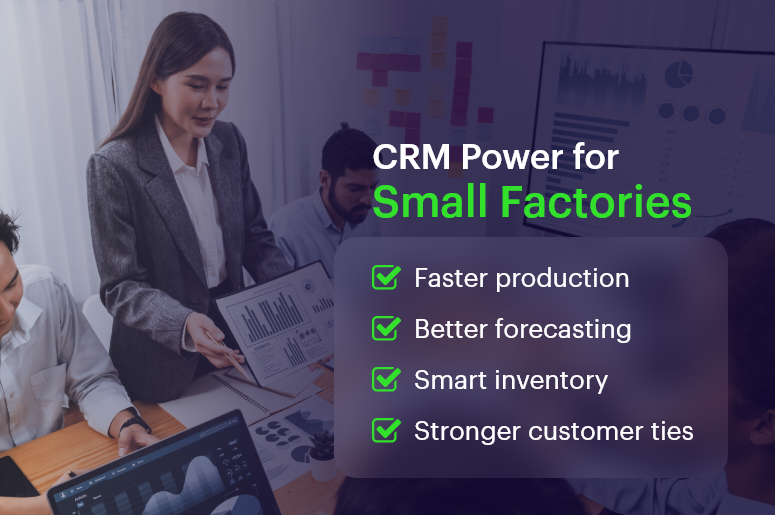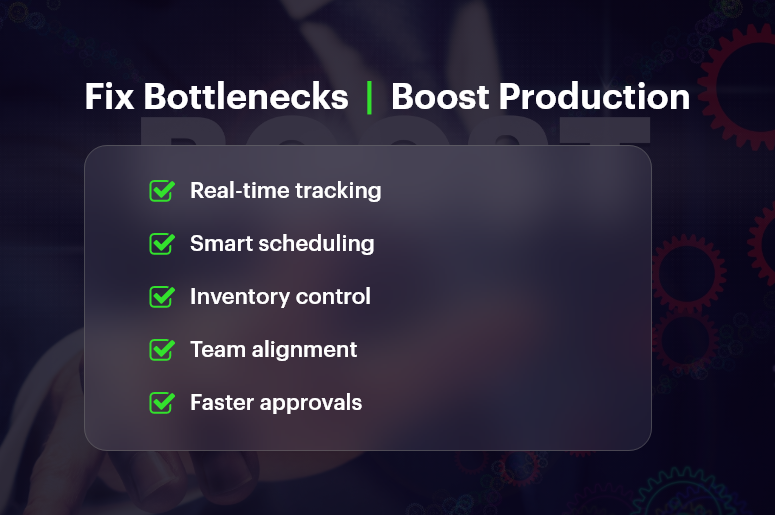Small factories often face a daunting reality: competing against global manufacturers with vast budgets, advanced technology, and large sales teams. It’s no surprise that many owners feel outmatched. Yet, here’s the twist — technology has leveled the playing field. How small factories can compete with big players using CRM insights isn’t just a hopeful idea; it’s a proven strategy.
By using customer relationship management tools not just for sales, but for production efficiency and operational intelligence, smaller players can punch well above their weight.
In this article, you’ll discover how CRM for manufacturing empowers small factories to operate smarter, respond faster, and seize opportunities the big guys overlook.

Why CRM Insights Matter for Small Factory Growth
For decades, large manufacturers held the advantage because they could afford sophisticated data systems. Now, modern CRMs — especially platforms like CRMLeaf — put data-driven decision making within reach of even the smallest operations.
Key reasons CRM insights are game-changing for small factories:
- Production efficiency — Identify bottlenecks and remove wasted steps.
- Better customer relationship management — Track and personalize every client interaction.
- Sales forecasting for manufacturers — Anticipate demand and adjust production proactively.
- Inventory and supply chain visibility — Prevent costly stockouts or overstock situations.
Example scenario: A small sheet-metal workshop uses CRM analytics to track order patterns and seasonal trends. The result? They reduce rush jobs by 30% and cut raw material costs by 15% simply by aligning purchasing with actual demand.
Best Practices for Leveraging CRM Insights in Small Factories
1. Map Customer Data to Production Planning
Most small factories use CRM to track quotes and orders — but that’s just the beginning. Link customer purchase history directly to production schedules to anticipate orders before they’re placed.
Quick wins:
- Use CRMLeaf’s forecasting module to align production with high-demand periods.
- Build a repeat-order alert system for loyal customers.
2. Use CRM Analytics to Improve Operational Efficiency
Factory performance analytics give you a real-time pulse on operations. By tracking production time, defect rates, and fulfillment speed, you can pinpoint weak spots instantly.
Action steps:
- Create daily efficiency dashboards.
- Benchmark shifts against each other to spot training needs.
3. Personalize Sales and Service for a Competitive Edge
Big players can’t always give customers a personal touch. Small factories can — and CRMs make it scalable.
How to implement:
- Use customer relationship management notes to remember client preferences.
- Offer proactive maintenance reminders for machinery parts you supply.
4. Optimize Workflow and Reduce Waste
With workflow optimization built into CRMLeaf, small factories can track every step from quote to delivery.
Best practice tips:
- Automate work order creation from confirmed quotes.
- Use alerts for stalled production tasks.
5. Integrate Inventory and Supply Chain Data
A disconnected supply chain is a common small factory problem. With CRM integration, you can track supplier lead times, material usage, and stock levels in one place.
Benefits:
- Avoid last-minute supplier searches.
- Negotiate better deals with accurate purchasing data.
Customer Success Story
For example, GreenTech Tools, a family-owned industrial parts factory, used CRMLeaf’s analytics to compete with larger regional suppliers.
By integrating sales data with production scheduling, they:
- Increased on-time deliveries by 35%
- Reduced overtime costs by 20%
- Boosted repeat orders by 25% through personalized follow-ups
Today, they’re winning contracts that once went to much larger competitors.
Key Takeaways: Leveling the Playing Field
How small factories can compete with big players using CRM insights comes down to working smarter, not harder.
In short:
- Leverage CRM analytics to make fast, informed decisions.
- Integrate sales and production data to avoid costly inefficiencies.
- Personalize customer interactions to win loyalty over size.
- Use supply chain visibility to stay ahead of delays.
By embracing CRM for manufacturing, small factories gain the same strategic intelligence that larger companies rely on — without the heavy overhead.




